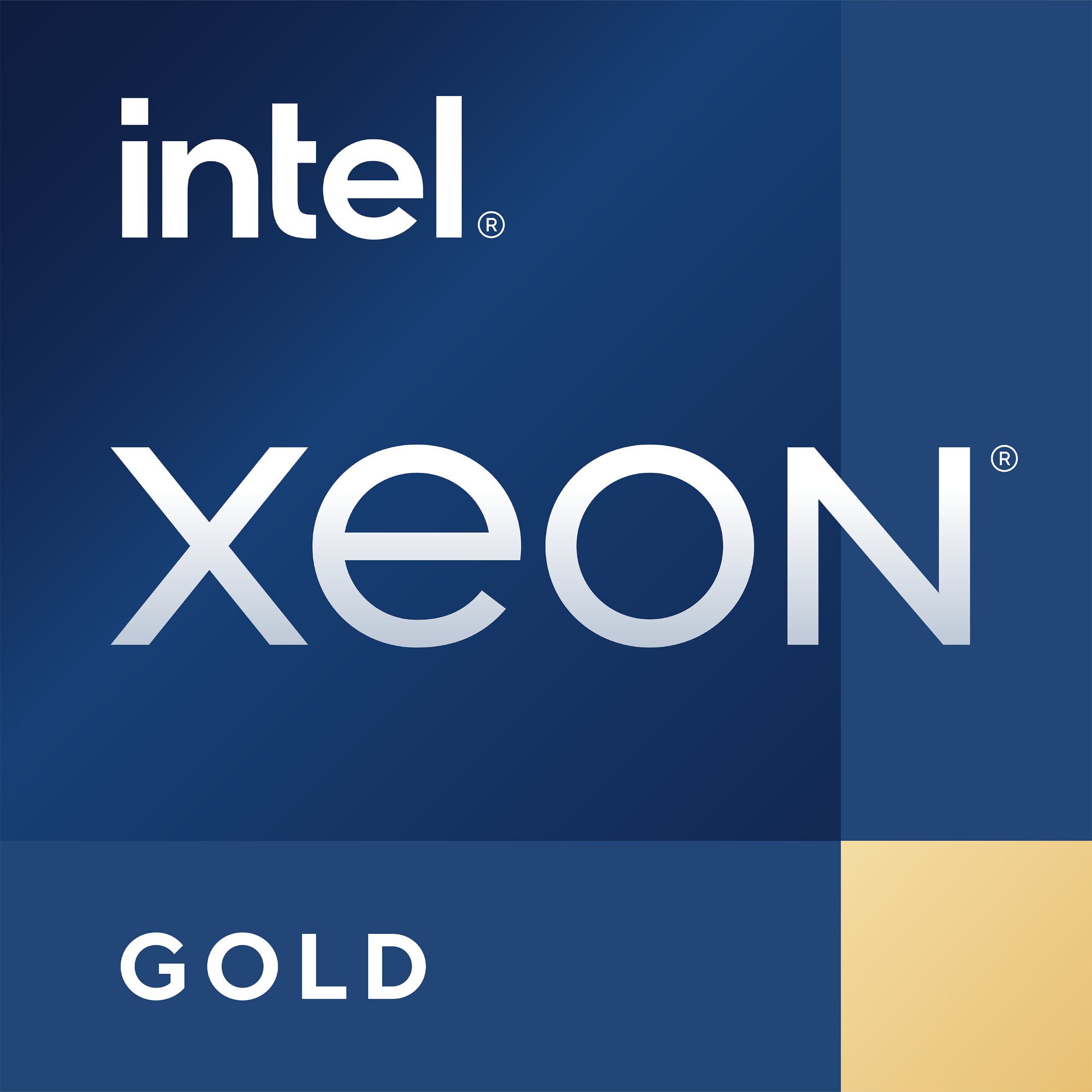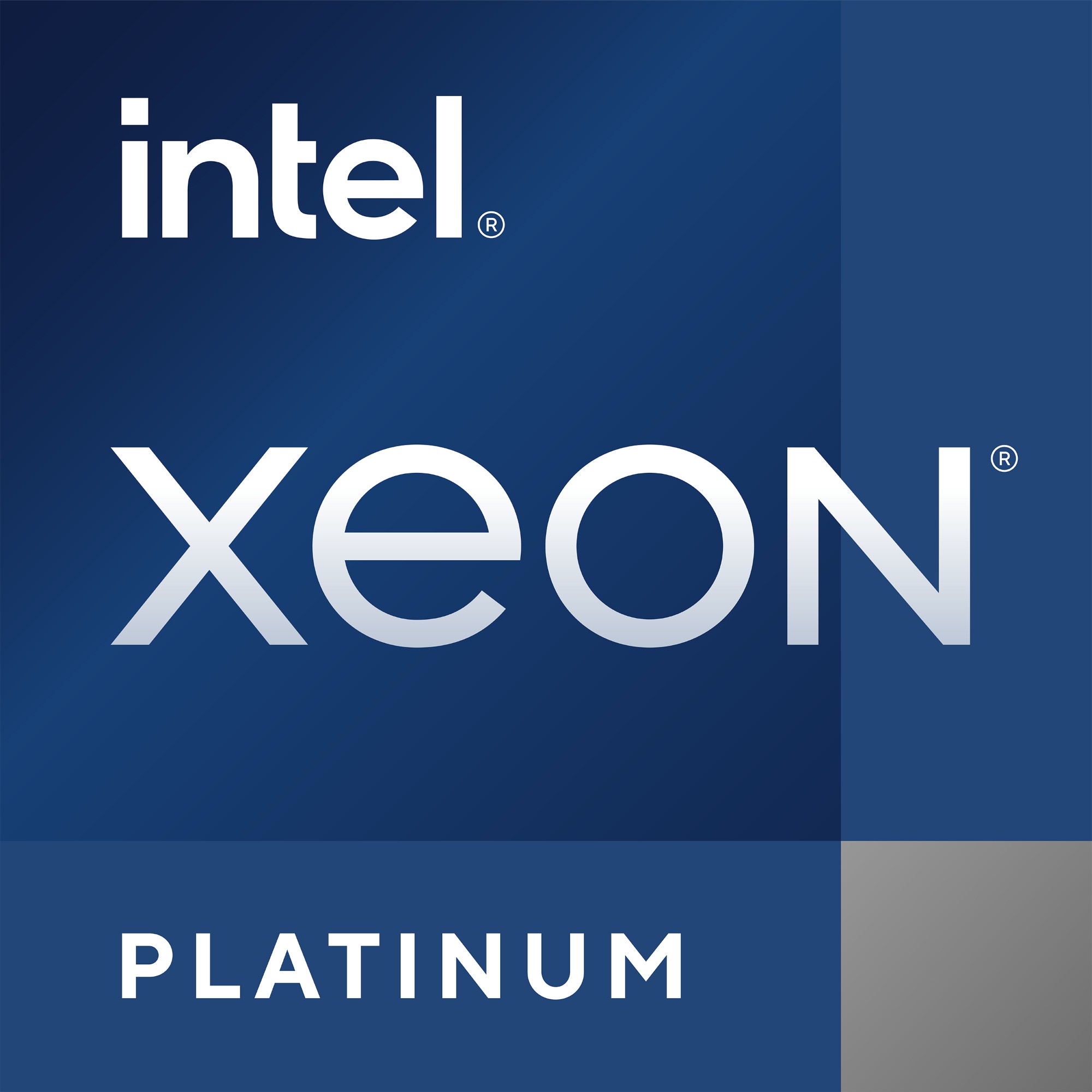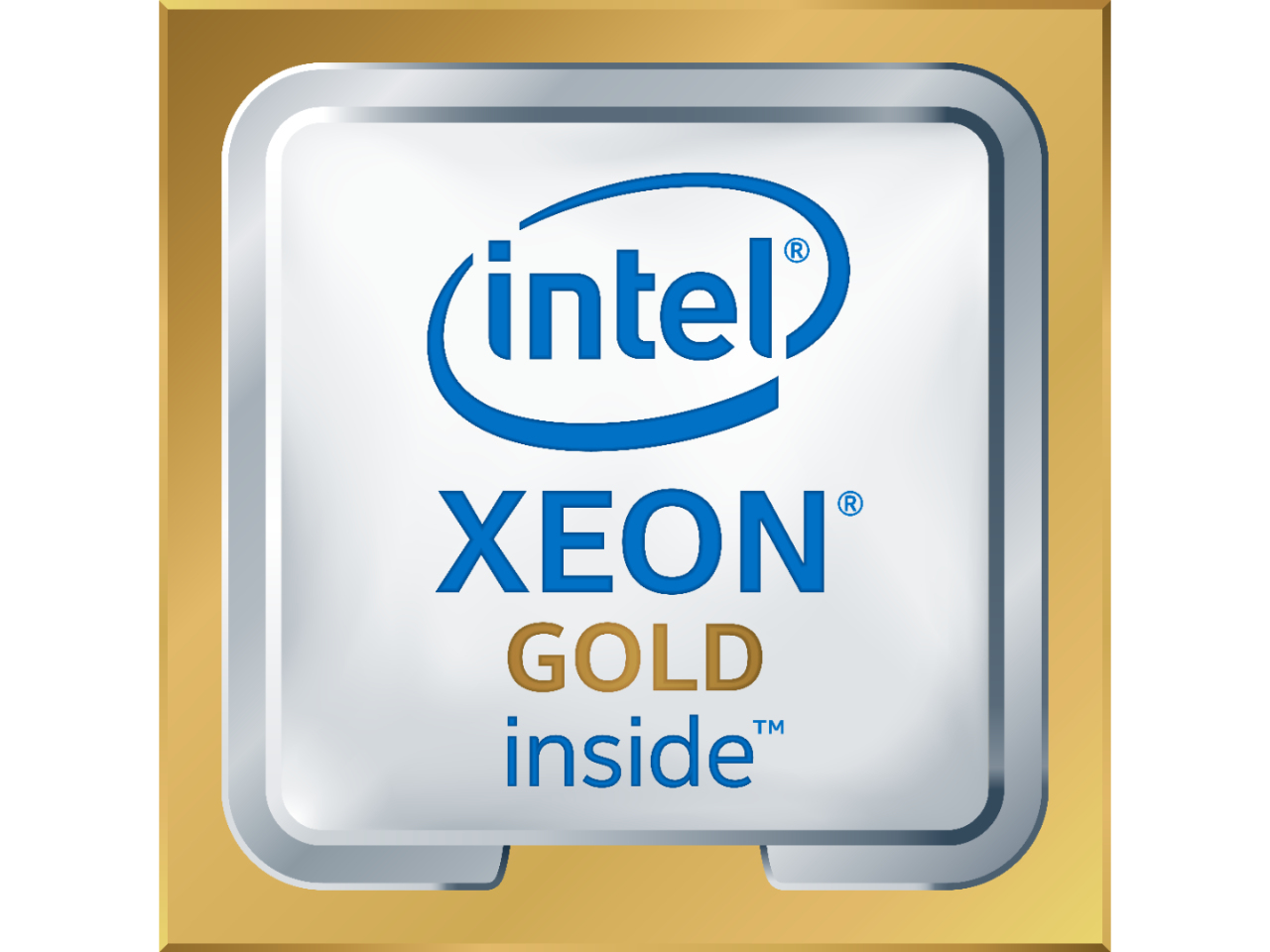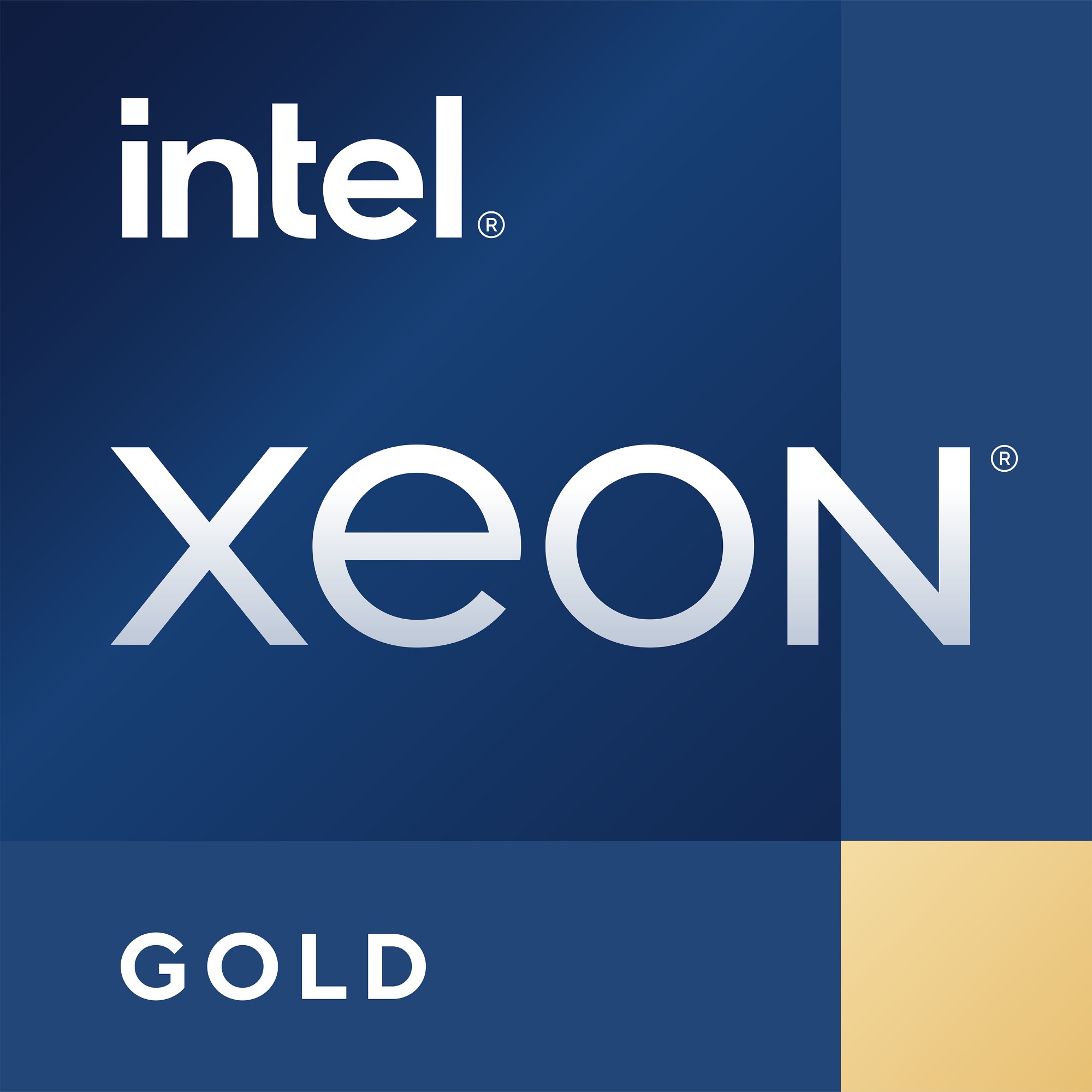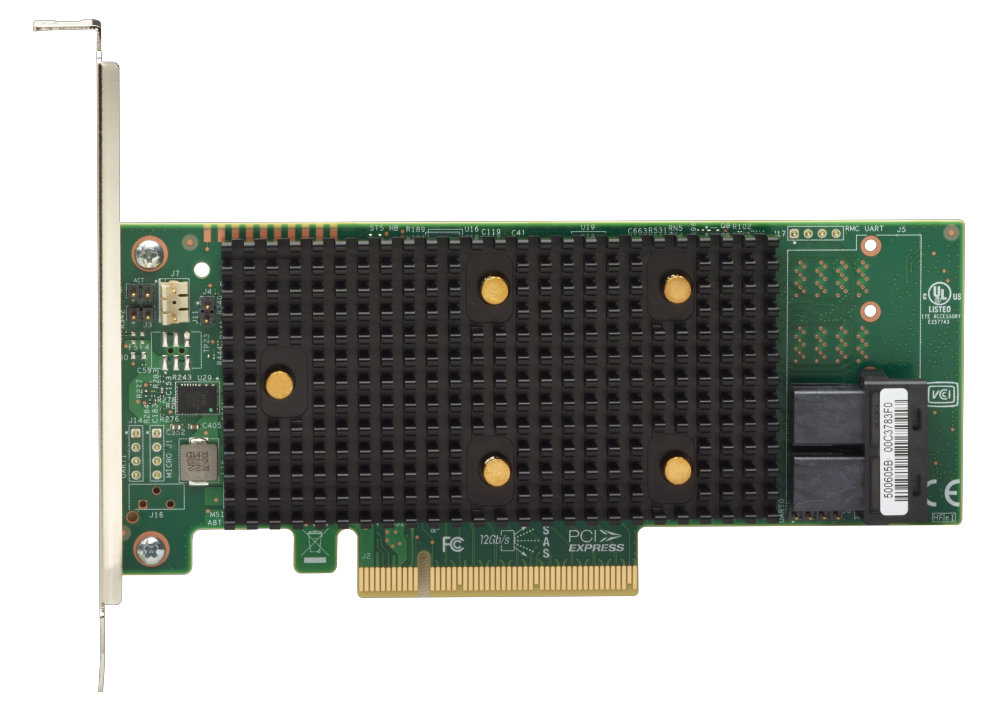Lenovo 4XG7A72947 Lenovo Intel Xeon Platinum 8358P processor 2.6 GHz 48 MB
ThinkSystem servers incorporate Intel Xeon Scalable Family processors to enable critical business workloads and applications. The Intel scalable design provides significant improvement in performance, advanced reliability, scalability and hardware-enhanced security. Enhancements include higher per-core performance, greater memory bandwidth, expanded I/O, and improved security. This page allows you compare the features of the processors.
Lenovo 4XG7A72935 Lenovo Intel Xeon Gold 6354 processor 3 GHz 39 MB
ThinkSystem servers incorporate Intel Xeon Scalable Family processors to enable critical business workloads and applications. The Intel scalable design provides significant improvement in performance, advanced reliability, scalability and hardware-enhanced security. Enhancements include higher per-core performance, greater memory bandwidth, expanded I/O, and improved security. This page allows you compare the features of the processors.
Lenovo 4XG7A72931 Lenovo Intel Xeon Platinum 8360Y processor 2.4 GHz 54 MB
ThinkSystem servers incorporate Intel Xeon Scalable Family processors to enable critical business workloads and applications. The Intel scalable design provides significant improvement in performance, advanced reliability, scalability and hardware-enhanced security. Enhancements include higher per-core performance, greater memory bandwidth, expanded I/O, and improved security. This page allows you compare the features of the processors.
Lenovo 4XG7A11375 Lenovo Intel Xeon Gold 6126T processor 2.6 GHz 19.25 MB L3
ThinkSystem servers incorporate Intel Xeon Scalable Family processors to enable critical business workloads and applications. The Intel scalable design provides significant improvement in performance, advanced reliability, scalability and hardware-enhanced security. Enhancements include higher per-core performance, greater memory bandwidth, expanded I/O, and improved security. This page allows you compare the features of the processors.
Lenovo 4XG7A63456 Lenovo Xeon Intel Gold 5317 processor 3 GHz 18 MB
Intel® Trusted Execution TechnologyIntel® Trusted Execution Technology for safer computing is a versatile set of hardware extensions to Intel® processors and chipsets that enhance the digital office platform with security capabilities such as measured launch and protected execution. It enables an environment where applications can run within their own space, protected from all other software on the system.Intel® Virtualization Technology for Directed I/O (VT-d)Intel® Virtualization Technology for Directed I/O (VT-d) continues from the existing support for IA-32 (VT-x) and Itanium® processor (VT-i) virtualization adding new support for I/O-device virtualization. Intel VT-d can help end users improve security and reliability of the systems and also improve performance of I/O devices in virtualized environments.Intel® Virtualization Technology (VT-x)Intel® Virtualization Technology (VT-x) allows one hardware platform to function as multiple “virtual” platforms. It offers improved manageability by limiting downtime and maintaining productivity by isolating computing activities into separate partitions.Intel® 64Intel® 64 architecture delivers 64-bit computing on server, workstation, desktop and mobile platforms when combined with supporting software.¹ Intel 64 architecture improves performance by allowing systems to address more than 4 GB of both virtual and physical memory.CacheCPU Cache is an area of fast memory located on the processor. Intel® Smart Cache refers to the architecture that allows all cores to dynamically share access to the last level cache.Intel® AES New InstructionsIntel® AES New Instructions (Intel® AES-NI) are a set of instructions that enable fast and secure data encryption and decryption. AES-NI are valuable for a wide range of cryptographic applications, for example: applications that perform bulk encryption/decryption, authentication, random number generation, and authenticated encryption.Intel® Turbo Boost TechnologyIntel® Turbo Boost Technology dynamically increases the processor's frequency as needed by taking advantage of thermal and power headroom to give you a burst of speed when you need it, and increased energy efficiency when you don’t.Max Turbo FrequencyMax Turbo Frequency is the maximum single-core frequency at which the processor is capable of operating using Intel® Turbo Boost Technology and, if present, Intel® Turbo Boost Max Technology 3.0 and Intel® Thermal Velocity Boost. Frequency is typically measured in gigahertz (GHz), or billion cycles per second.Execute Disable BitExecute Disable Bit is a hardware-based security feature that can reduce exposure to viruses and malicious-code attacks and prevent harmful software from executing and propagating on the server or network.Intel® Hyper-Threading TechnologyIntel® Hyper-Threading Technology (Intel® HT Technology) delivers two processing threads per physical core. Highly threaded applications can get more work done in parallel, completing tasks sooner.Intel® VT-x with Extended Page Tables (EPT)Intel® VT-x with Extended Page Tables (EPT), also known as Second Level Address Translation (SLAT), provides acceleration for memory intensive virtualized applications. Extended Page Tables in Intel® Virtualization Technology platforms reduces the memory and power overhead costs and increases battery life through hardware optimization of page table management.Intel® Speed Shift TechnologyIntel® Speed Shift Technology uses hardware-controlled P-states to deliver dramatically quicker responsiveness with single-threaded, transient (short duration) workloads, such as web browsing, by allowing the processor to more quickly select its best operating frequency and voltage for optimal performance and power efficiency.Intel® Crypto AccelerationIntel® Crypto Acceleration reduces the performance impact of pervasive encryption and increases the performance of encryption-intensive workloads including SSL web serving, 5G infrastructure, and VPN/firewalls.Intel® Software Guard Extensions (Intel® SGX)Intel® Software Guard Extensions (Intel® SGX) provide applications the ability to create hardware enforced trusted execution protection for their applications’ sensitive routines and data. Intel® SGX provides developers a way to partition their code and data into CPU hardened trusted execution environments (TEE’s).Intel® Speed Select Technology – Core PowerEnables flexibility for workloads that benefit from higher base frequency on a subset of the processor’s cores. While the max turbo frequency across the cores remain constant across the cores, a subset of the cores can be assigned as to run at a higher base frequency than specified, while the other cores run at lower base frequency.Intel® Speed Select Technology – Turbo FrequencyEnables flexibility for workloads that benefit from higher turbo frequency on a subset of the processor’s cores. While the base frequency remains constant across the cores, a subset of the cores can be assigned to run at a higher turbo frequency than specified, while the other cores run at lower turbo frequency.Intel® Deep Learning Boost (Intel® DL Boost)A new set of embedded processor technologies designed to accelerate AI deep learning use cases. It extends Intel AVX-512 with a new Vector Neural Network Instruction (VNNI) that significantly increases deep learning inference performance over previous generations.Instruction Set ExtensionsInstruction Set Extensions are additional instructions which can increase performance when the same operations are performed on multiple data objects. These can include SSE (Streaming SIMD Extensions) and AVX (Advanced Vector Extensions).Intel® Run Sure TechnologyIntel® Run Sure Technology, includes advanced RAS (reliability, availability and serviceability) features that deliver high reliability and platform resiliency, to maximize uptime of servers running mission-critical workloads.Intel® Total Memory EncryptionTME – Total Memory Encryption (TME) helps protect data against exposure via physical attack on memory, such as cold-boot attacks.# of UPI LinksIntel® Ultra Path Interconnect (UPI) links are a high speed, point-to-point interconnect bus between the processors, delivering increased bandwidth and performance over Intel® QPI.# of AVX-512 FMA UnitsIntel® Advanced Vector Extensions 512 (AVX-512), new instruction set extensions, delivering ultra-wide (512-bit) vector operations capabilities, with up to 2 FMAs (Fused Multiply Add instructions), to accelerate performance for your most demanding computational tasks.Intel® Resource Director Technology (Intel® RDT)Intel® RDT brings new levels of visibility and control over how shared resources such as last-level cache (LLC) and memory bandwidth are used by applications, virtual machines (VMs) and containers.Intel® Speed Select Technology - Base FrequencyEnables users to increase guaranteed base frequency on certain cores (high priority cores) in exchange for lower base frequency on remaining cores (low priority cores). Improves overall performance by boosting frequency on critical cores.Intel® Volume Management Device (VMD)Intel® Volume Management Device (VMD) provides a common, robust method of hot plug and LED management for NVMe-based solid state drives.Intel® Optane™ Persistent Memory SupportedIntel® Optane™ persistent memory is a revolutionary tier of non-volatile memory that sits between memory and storage to provide large, affordable memory capacity that is comparable to DRAM performance. Delivering large system-level memory capacity when combined with traditional DRAM, Intel Optane persistent memory is helping transform critical memory constrained workloads – from cloud, databases, in-memory analytics, virtualization, and content delivery networks.Mode-based Execute Control (MBE)Mode-based Execute Control can more reliably verify and enforce the integrity of kernel level code.Intel® Transactional Synchronization ExtensionsIntel® Transactional Synchronization Extensions (Intel® TSX) are a set of instructions that add hardware transactional memory support to improve performance of multi-threaded software.
Lenovo 4XG7A63567 Lenovo Intel Xeon Gold 6348 processor 2.6 GHz 42 MB
ThinkSystem servers incorporate Intel Xeon Scalable Family processors to enable critical business workloads and applications. The Intel scalable design provides significant improvement in performance, advanced reliability, scalability and hardware-enhanced security. Enhancements include higher per-core performance, greater memory bandwidth, expanded I/O, and improved security. This page allows you compare the features of the processors.
Lenovo 4XG7A63527 Lenovo Intel Xeon Gold 6330 processor 2 GHz 42 MB
ThinkSystem servers incorporate Intel Xeon Scalable Family processors to enable critical business workloads and applications. The Intel scalable design provides significant improvement in performance, advanced reliability, scalability and hardware-enhanced security. Enhancements include higher per-core performance, greater memory bandwidth, expanded I/O, and improved security. This page allows you compare the features of the processors.
Lenovo 4X67A76581 Lenovo NVIDIA A30 24 GB GDDR6
The NVIDIA A30 offers versatile compute acceleration for mainstream enterprise servers. With NVIDIA Ampere architecture Tensor Cores and Multi-Instance GPU (MIG), it delivers speedups securely across diverse workloads, including AI inference at scale and HPC applications. The A30 combines fast memory bandwidth and low-power consumption in a PCIe form factor to enable an elastic data center and delivers maximum value for enterprises.This product guide provides essential presales information to understand the NVIDIA A30 GPU and its key features, specifications, and compatibility. This guide is intended for technical specialists, sales specialists, sales engineers, IT architects, and other IT professionals who want to learn more about the NVIDIA A30 GPU and consider its use in IT solutions.
Lenovo 4Y37A09727 Lenovo 4Y37A09727 RAID controller PCI Express x8 3.0 12 Gbit/s
The ThinkSystem RAID 530 family are entry-level 12 Gb SAS/SATA internal RAID adapters that offer a cost-effective RAID solution for small to medium business customers. These cacheless adapters support RAID levels 0/1/10/5/50, and include an extensive list of RAS and management features.This product guide provides essential presales information to understand the ThinkSystem RAID 530-4i and 530-8i adapters and their key features, specifications, and compatibility. This guide is intended for technical specialists, sales specialists, sales engineers, IT architects, and other IT professionals who want to learn more about the adapters and consider their use in IT solutions.
Lenovo 4XG7A63443 Lenovo Xeon Intel Silver 4309Y processor 2.8 GHz 12 MB
Lenovo Xeon Intel Silver 4309Y. Processor family: Intel Xeon Silver, Processor socket: LGA 4189, Processor lithography: 10 nm. Memory channels: Octa-channel, Maximum internal memory supported by processor: 6.14 TB, Memory types supported by processor: DDR4-SDRAM. Market segment: Server, Supported instruction sets: SSE4.2, AVX, AVX 2.0, AVX-512, Scalability: 2S. Maximum Enclave Size Support for Intel® SGX: 8 GB. Package type: Retail box
Get a Quote
Item(s) added to cart
Netgear GS105E-200NAS ProSafe Plus Switch, 5-Port Gigabit Ethernet - 5 Ports - 2 Layer Supported - Wall Mountable - Lifetime Limited Warranty-None Listed Compliance
MFR: Netgear, Inc
Qty: 1
Part #: GS105NA


